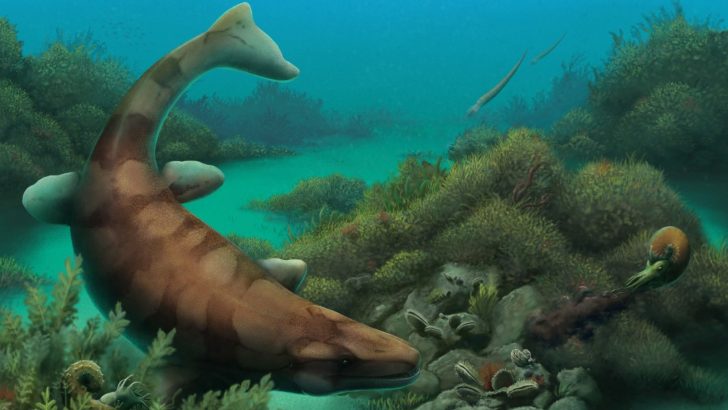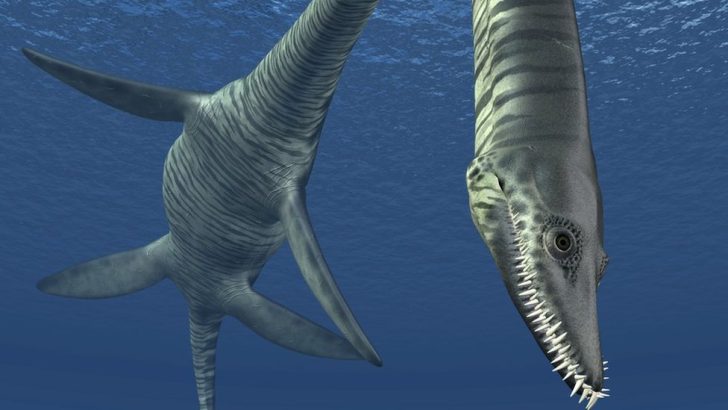Scientists Solve the Mystery of the 85-Million-YO Sea Monster That Crushed Prey With Giant Teeth
Traskasaura sandrae is not an average sea monster. This 12-meter-long killer ruled the oceans 85 million years ago, crushing ammonites with jaws full of thick, brutal teeth. Scientists finally cracked its mystery after decades of studying scattered fossils.
Now, we know what made this creature a true terror in ancient seas.
The first fossil showed up in 1988 on Vancouver Island. At the time, nobody realized what they had found. It took until 2020 for a nearly complete juvenile skeleton to come to light. That skeleton changed everything. It revealed a new genus and species with features never seen before in other long-necked plesiosaurs.

E Online / Traskasaura sandrae is a weird mix of old and new traits, a mashup of evolutionary leftovers and cutting-edge adaptations.
That is part of what made it so hard to classify. It looked a bit like the others, but its body told a different story.
Unlike most of its relatives that probably snatched fish from the side, this one attacked from above. That is rare, even unheard of, for plesiosaurs. But its body was clearly built for the job. Its flippers looked like upside-down airplane wings, made to slice through water and dive fast.
Traskasaura sandrae Had Teeth Like Bone Crushers
If you saw Traskasaura sandrae up close, the first thing you would notice would be its teeth. Big, thick, and strong, they were made for smashing. Scientists believe this sea monster fed mainly on ammonites, hard-shelled sea creatures that curled like snail shells. Most predators couldn’t crack them. Traskasaura sandrae could.
Its jaw structure backed this up. It had the strength and bite power to break through thick shells. That is rare in marine reptiles from this time. It tells us this creature wasn’t chasing soft prey. Instead, it was a specialist, and its mouth was the perfect tool for the job.
It Hunted Like a Dive Bomber
Traskasaura sandrae didn’t stalk its prey horizontally like most predators in the sea. Its body was shaped for vertical attacks. Think of a hawk diving from the sky, only underwater. Its flippers were key. Shaped like inverted wings, they let it plunge from above with force and control.
This means ammonites probably never saw it coming. One second they were floating, the next they were being crushed by a beast from above. That style of hunting is rare in marine reptiles, especially ones with long necks. But it gave Traskasaura sandrae an edge that worked.

Popular Science / The mystery of Traskasaura sandrae started back in 1988. But scientists didn’t know what they had until now.
It was just a fossil fragment from Vancouver Island. They thought it might match plesiosaurs found in Antarctica. It looked similar, but something was off.
Then, in 2020, a remarkably complete juvenile fossil appeared. This skeleton gave researchers a clearer view. It showed off the strange mix of features, the shape of the flippers, and the powerful jaw.
Juvenile fossils are rare, but this one changed the game. It was almost complete and helped scientists piece together what the adult version looked like. It had the same thick teeth, odd flippers, and long neck, all in one package.
From this fossil, researchers confirmed what they had suspected. Traskasaura sandrae wasn’t just another elasmosaur. It was its own thing, with its own role in the food chain. This kid-sized fossil cracked open the past and gave us the full picture of a predator that hunted like no other.